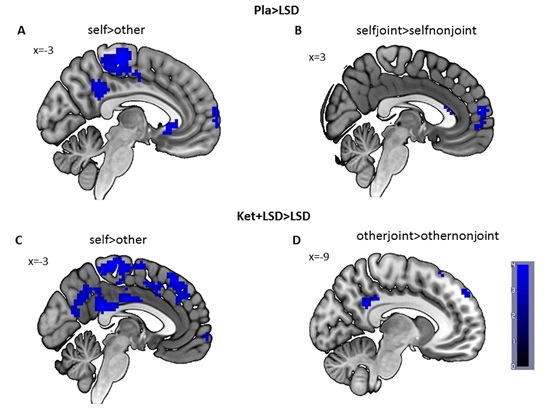LSD Blurs Boundary Between Self and Other
A human brain imaging study published in JNeurosci finds that the hallucinogen lysergic acid diethylamide (LSD) alters the activity of brain regions involved in differentiating between oneself and another person.

Katrin Preller, Franz Vollenweider (University of Zurich) and colleagues investigated the role of the serotonin 2A receptor in social interaction, which is impaired in several psychiatric disorders. Human participants received either LSD; ketanserin, a drug that blocks the effects of LSD; or a placebo prior to engaging in a gaze-following game with a virtual human-like character.
By combining functional magnetic resonance imaging and eye-tracking, the researchers found that LSD interfered with participants' ability to coordinate attention with the virtual character on a particular object on the screen. During this social task, LSD reduced activity in the posterior cingulate cortex and the temporal cortex, brain areas important for establishing one's sense of self, and appeared to blur the line between the experimental conditions where either the participant or the virtual character took the lead in directing attention. These effects were blocked by ketanserin, indicating that this receptor system may be a target for treating social impairments in disorders that involve an increased self-focus, as in depression, or loss of the sense of self, as in schizophrenia.
Article: Role of the 5-HT2A receptor in self- and other-initiated social interaction in LSD-induced states - a pharmacological fMRI study
Corresponding author: Katrin Preller (University of Zurich, Switzerland), preller@bli.uzh.ch




















